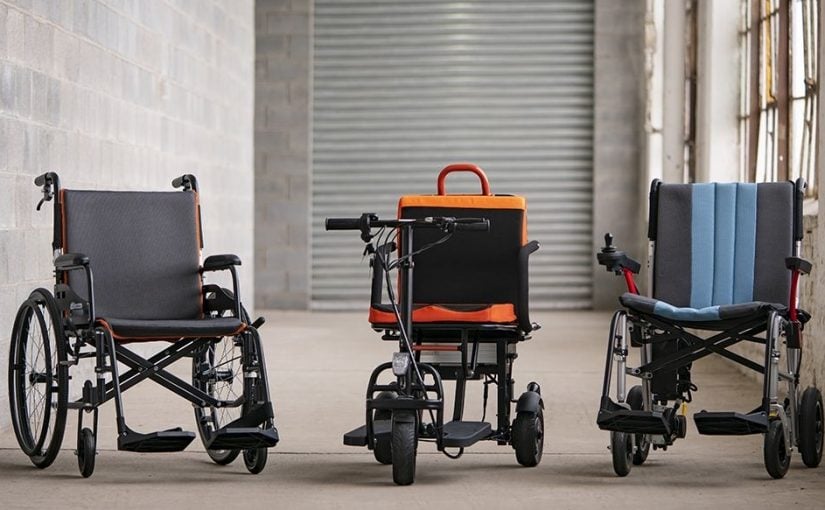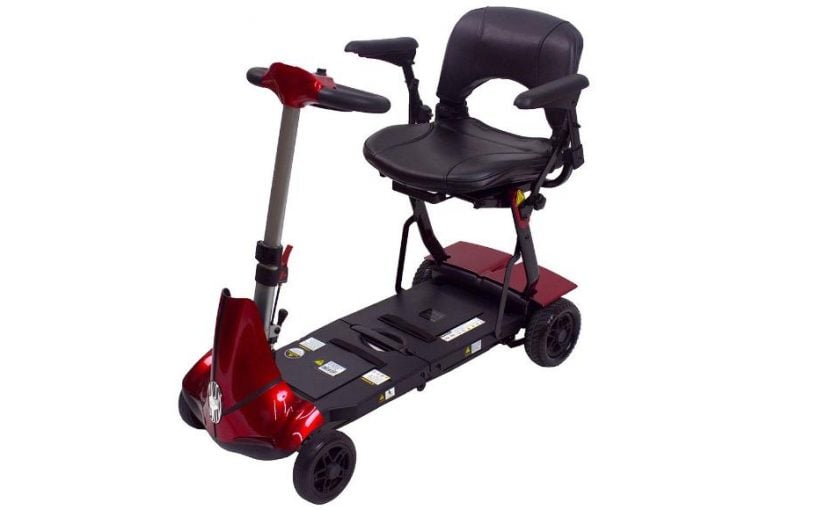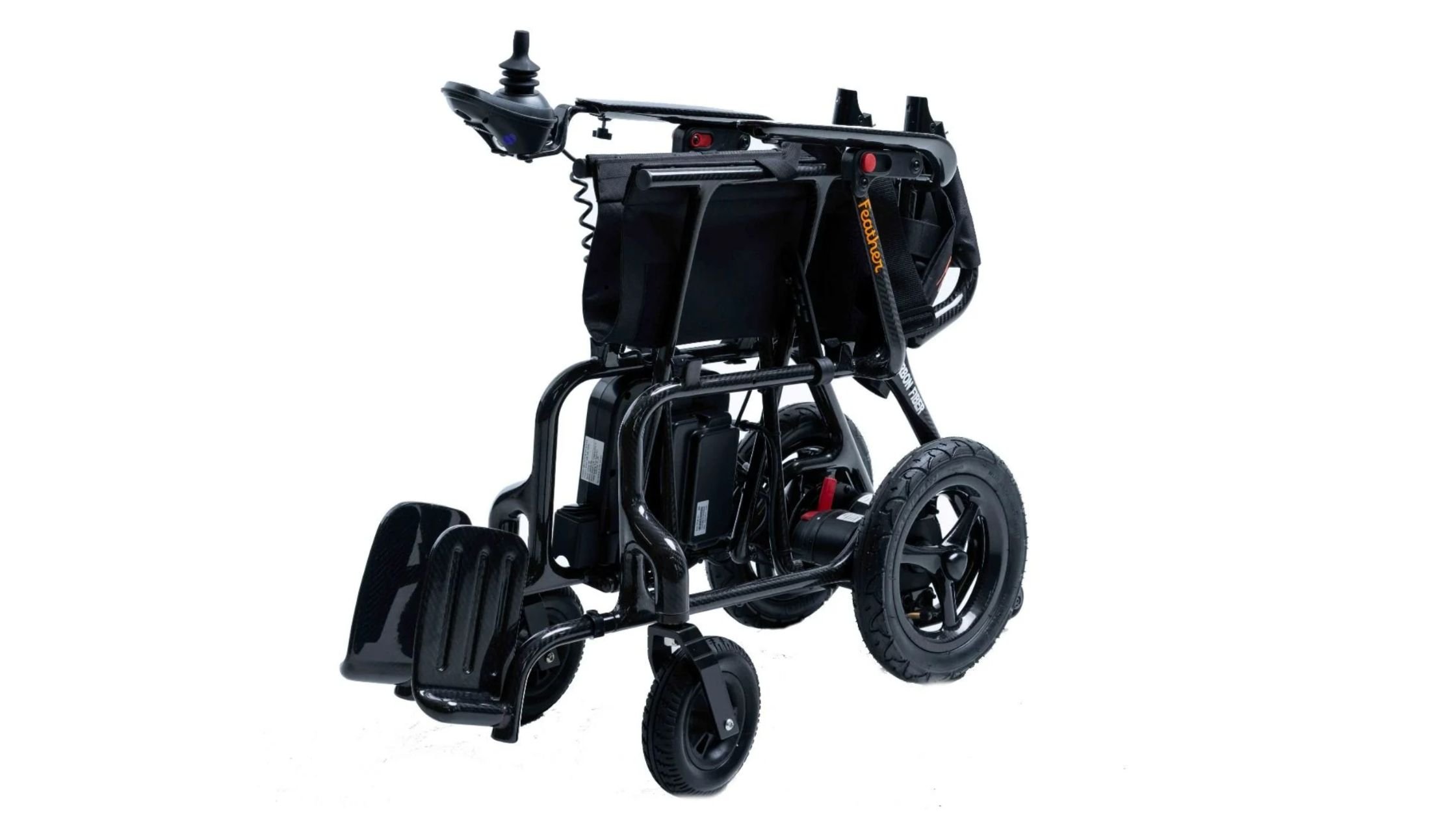Did you know that up to 67% of seniors need help moving around? Yet, many don’t know how to pick the right motorized wheelchair. The right electric mobility chair can greatly improve their life, giving them freedom and confidence.
In this guide, we’ll help you understand motorized wheelchairs for seniors. We’ll cover important parts, types, and comfort features. Our goal is to give you the knowledge to choose the best wheelchair for your needs. With the right wheelchair, you can see a big improvement in your life. So, let’s start exploring how to find the perfect mobile wheelchair for you!
Key Takeaways
- 67% of seniors need mobility assistance.
- 80% of wheelchair users see improved quality of life.
- Comfort features are prioritized by over 70% of users.
- Types of motorized wheelchairs vary based on user requirements.
- Medicare typically covers about 80% of costs for eligible users.
- Quality motorized wheelchairs can support various environments, from indoor to outdoor use.
Understanding Motorized Wheelchairs
Motorized wheelchairs, also known as electric wheelchairs, help people who struggle with moving on their own. They offer freedom and improve life quality by making it easy to get around. With many features and options, they meet the needs of different users.
What Is a Motorized Wheelchair?
A motorized wheelchair uses an electric motor to move. Its joystick controls it, making it easy to go forward, backward, and sideways. This is great for those who have trouble moving on their own. They come in many designs, perfect for both inside and outside use.
Key Components and Functionality
Knowing what makes up a motorized wheelchair is key to picking the right one. Important parts include:
- Motor: Gives the power needed for movement, from basic to advanced, like brushless motors, for better efficiency.
- Battery: Lithium-ion batteries are best for longer rides, about 30% better than older ones.
- Seating: Adjustable seats for comfort and support, with different cushions for pressure relief.
- Control systems: Advanced systems, like the Q-Logic 3, meet complex needs.
- Drive wheels: Can be in the front, middle, or back, affecting how easy it is to move and stay steady.
Electric wheelchairs can go 4 to 8 miles per hour. This lets users move around indoors and outdoors well. You can also customize them with phone holders and LED lights to fit your lifestyle.
Types of Motorized Wheelchairs Available
Choosing a motorized wheelchair means knowing the different types. Each is made for specific needs, helping users find the right one. Here are the main types of motorized wheelchairs you can look at.
Full-Size Power Wheelchairs
Full-size power wheelchairs are great for daily use. They have big seats, lots of legroom, and can hold up to 300 lbs or more. They’re built to go far on one battery charge, making daily activities easier.
They also have features like adjustable armrests and footrests. This makes them perfect for long-term use.
Travel Power Wheelchairs
A travel power wheelchair is perfect for those who must move around a lot. They’re light and easy to take with you, folding or disassembling to fit in cars. Fold up power wheelchairs are great for small spaces and ideal for travel or tight areas.
Even though they’re small, they offer the support and ease of movement you need.
Bariatric and Heavy-Duty Wheelchairs
Bariatric and all terrain electric wheelchairs are for those who need more support. They have strong frames and wide seats for users up to 600 lbs or more. They’re built for stability and durability, making them a solid choice for everyday use.
Knowing about these options helps you pick a wheelchair that’s both comfortable and safe.
Factors to Consider When Choosing a Motorized Wheelchair
Choosing the right motorized wheelchair requires careful thought. Each user has unique needs that must be evaluated. These include assessing mobility needs, the user’s physical condition, and the living environment for wheelchairs.
Assessing Mobility Needs
Think about how often and where the wheelchair will be used. Will it be mainly for indoor or outdoor use? The answer will help choose the right features for each setting. You might need a wheelchair that’s stable outdoors or compact for small spaces.
User’s Physical Condition
The user’s physical condition is key in choosing a wheelchair. Consider strength, coordination, and health status. For example, those needing more weight capacity might require specialized wheelchairs. Customizable options can also improve comfort and support, which is important for long-term use.
Living Environment and Accessibility
Assess the living environment for wheelchair use. Check doorway sizes, stairs, hallway widths, and obstacles. A space that can adapt to mobility aids can greatly improve daily life.
Key Features for Comfort and Support
Choosing the right motorized wheelchair is important. You need to think about features that make you comfortable. Adjustability and customization options are key. They let you make the wheelchair fit your needs perfectly.
Adjustability and Customization Options
Adjustability and customization options in motorized wheelchairs are vital for comfort. CRT power mobility devices offer many options. You can adjust the seat height, backrest angles, and armrest positions.
This flexibility suits different body types and preferences. DME power mobility devices have limited adjustability. So, it’s important to pick a model that meets your needs.
Comfort and Pressure Relief
Look for features that reduce discomfort during long use. New cushioning materials and designs help prevent sores. They make sitting more comfortable.
About 60% of users prefer customized seating. Power seat functions like Power Tilt and Power Recline also improve comfort. They let users change positions quickly and reduce pressure on sensitive areas.
Safety Features to Look For
Safety features in wheelchairs are essential for user safety. Important safety elements include:
- Reliable braking systems
- Anti-tippers for incline stability
- Secure seat belts or harnesses
These features help users feel secure while moving around. They allow users to enjoy their mobility without worrying about accidents or instability.
| Feature |
DME Power Mobility Devices |
CRT Power Mobility Devices |
| Adjustability |
Limited |
Highly Customizable |
| Cushioning |
Standard |
Pressure-Relieving Options |
| Safety Features |
Basic |
Advanced |
Drive Wheel Configurations Explained
It’s important to know about the different drive wheel setups in power wheelchairs. Each type has its own benefits for different places and user needs. Let’s look at front-wheel, mid-wheel, and rear-wheel drive power wheelchairs. We’ll highlight their key features to help you choose the right one.
Front-Wheel Drive Power Wheelchairs
Front-wheel drive power wheelchairs are great for uneven surfaces and curbs. They have four tires for better traction on soft ground, perfect for outdoors. They also turn quickly in tight spots.
Some newer models are more stable, but be careful going downhill. They might fishtail.
Mid-Wheel Drive Power Wheelchairs
Mid-wheel drive power wheelchairs are perfect for indoor use where space is tight. They can turn in circles easily in small areas. They also stay stable, making them easy to control.
These chairs are seen as more user-friendly. They’re great for those new to power wheelchairs.
Rear-Wheel Drive Power Wheelchairs
Rear-wheel drive power wheelchairs are best for outdoor use. They have big rear wheels and suspension for better stability and traction. They handle hills and uneven ground well.
They might be more challenging to turn, but they offer a smoother ride. This makes them popular for outdoor trips.
| Configuration Type |
Best For |
Turning Radius |
Advantages |
Considerations |
| Front-Wheel Drive |
Outdoor & Uneven Surfaces |
Small |
Increased traction, stable on slopes |
Potential fishtailing on declines |
| Mid-Wheel Drive |
Indoor Maneuverability |
Smallest |
Best turning radius, intuitive use |
Less effective outdoors on rough terrain |
| Rear-Wheel Drive |
Outdoor Stability |
Largest |
Smooth ride, great control at speed |
Requires more space for turns |
Cost Considerations for Motorized Wheelchairs
Choosing a motorized wheelchair means looking at the cost. Prices can range from $2,000 to $15,000. Knowing what you need to see if the price is right is important.
Understanding the Cost of an Electric Wheelchair
The motorized wheelchair weight and how easy it is to move affect the price. Lighter models are great for traveling. They can weigh between 50-100 pounds.
Foldable power wheelchairs save space, which is good for tiny homes. Battery life is key; look for ones that last 10-15 miles on a single charge. Comfortable seating and custom options can also impact the price.
Insurance and Medicare Coverage
Insurance can help pay for an electric wheelchair. Medicare covers power wheelchairs under Part B. It pays 80% of the cost of an electric wheelchair for buying and renting.
To get Medicare coverage, you must need a power wheelchair. Look into other financial help options, too.
| Cost Type |
Medicare Coverage |
Insurance Coverage |
| Rental Option |
80% of the rental charge for the first 10 months |
Varies by the plan; possible partial coverage |
| Purchase Option |
80% of the allowable purchase price |
Varies by the plan; possible partial coverage |
| Maintenance Coverage |
80% every six months if rented or purchased |
Varies by plan; possible coverage |
| Criteria for Coverage |
Chair-bound status, inability to use a manual chair |
Dependent on individual plan’s requirements |
Improving Quality of Life with the Right Wheelchair
Choosing the right motorized wheelchair can change a senior’s life. It brings increased independence with wheelchairs. These tools help older adults do daily tasks independently, lessening the need for caregivers.
Also, they make it easier for seniors to do things that improve their lives. This leads to a big improvement in quality of life.
Increased Independence and Mobility
Power wheelchairs help people with many health issues, like muscular dystrophy and mobility problems due to age. They make moving around easy. For those who get tired quickly, an electric wheelchair lets them go out and do things without getting too tired.
About 60% of people over 65 have trouble moving around. This shows how important these tools are. With the right wheelchair, people can explore more, improving their lives by up to 30%.
Enhanced Social Interaction Opportunities
Power wheelchairs make meeting up with family and friends easier for seniors. They can go to community events and outings. This is key for keeping their minds and spirits up.
Studies show that seniors using power wheelchairs go to more social events. This makes their lives better and more fulfilling.
Conclusion
Choosing a motorized wheelchair can change a senior’s life by improving their mobility. Knowing what features are essential and what the user needs is important. Electric wheelchairs make moving around easy with joystick controls. But manual wheelchairs are cheaper and don’t need batteries, though they require effort to push.
Electric wheelchairs let users travel faster and go places they couldn’t before. But they need batteries and cost money to keep running. It’s key to weigh these points to find the best wheelchair for comfort and needs.
By carefully picking a wheelchair, seniors can control their movements. This choice can greatly enhance their life quality.
| Feature |
Manual Wheelchair |
Electric Wheelchair |
| Independence |
Requires physical effort to propel |
Effortless movement through joystick controls |
| Cost |
Generally less expensive |
Higher upfront cost with ongoing maintenance |
| Battery Life |
N/A |
Can limit mobility if charged incorrectly |
| Comfort |
Basic seating |
Often features comfortable, adjustable seats |
| Accessibility |
May struggle on varied terrains |
Designed for easy navigation of difficult surfaces |
| Physical Engagement |
Improves upper body strength |
No physical exertion is required |
About 1800Wheelchair
At 1800Wheelchair, we’re here to help those with mobility issues. We know that about 40% of people over 65 face challenges that make living alone hard. Our goal is to offer real solutions and advice.
We have a wide range of power wheelchairs, travel options, and bariatric models. Our team is ready to help you find what you need.
About 80% of insurance plans and Medicare can help pay for power wheelchairs. The demand for these chairs is growing by 7% each year. This means now is a great time to find the right chair for you.
Check out our wide selection of mobility solutions at 1800Wheelchair. We have over 200 types of wheelchairs, all designed for comfort and freedom. Visit us to see how we can help improve your life.
FAQ
What are the main types of motorized wheelchairs available?
There are several types of motorized wheelchairs. These include full-size power wheelchairs, travel power wheelchairs, and bariatric and heavy-duty wheelchairs. Each type is designed for different mobility needs and lifestyles.
How does a motorized wheelchair differ from a manual wheelchair?
A motorized wheelchair, or electric wheelchair, runs on a battery and is controlled by a joystick. This makes it easier for people with limited mobility to move around without needing to push themselves. Manual wheelchairs, on the other hand, require physical effort to move.
What should I consider when assessing the mobility needs of a senior?
When looking at mobility needs, think about how often the wheelchair will be used. Also, consider if it will be used indoors or outdoors. Look at the user’s physical abilities, like strength and coordination, to find the right motorized wheelchair.
Are there specific features I should look for to ensure comfort in a motorized wheelchair?
Yes, look for adjustable parts like seat height and backrest angles. Also, check for cushioning materials for comfort and safety features like reliable brakes. These ensure comfort and safety while using the wheelchair.
What is the weight capacity of bariatric motorized wheelchairs?
Bariatric motorized wheelchairs support users up to 600 pounds or more. They have reinforced frames and wider seats for stability and comfort.
How does drive wheel configuration impact the performance of a motorized wheelchair?
The drive wheel configuration affects how well the wheelchair turns. Front-wheel drive is good for rough terrain. Mid-wheel drive is best for indoor turns. Rear-wheel drive is faster for outdoor use but needs more space for turns.
What is the typical cost of an electric wheelchair?
Electric wheelchairs can cost anywhere from a few hundred to several thousand dollars. It’s important to consider the features to make sure they meet your needs.
Is insurance coverage available for motorized wheelchairs?
Yes, many insurance plans, including Medicare, may cover the cost of a motorized wheelchair. You need a prescription from a qualified medical professional. Check with your insurance provider for details and eligibility.
How can a motorized wheelchair improve a senior’s quality of life?
A motorized wheelchair can greatly improve a senior’s life. It allows them to move around easily and do daily activities without help. This boosts their confidence and mental wellbeing.
What sets 1800Wheelchair apart in providing motorized wheelchairs?
1800Wheelchair offers a wide range of motorized wheelchairs, including travel and bariatric models. They also provide expert guidance to help customers choose the right wheelchair for their needs.














